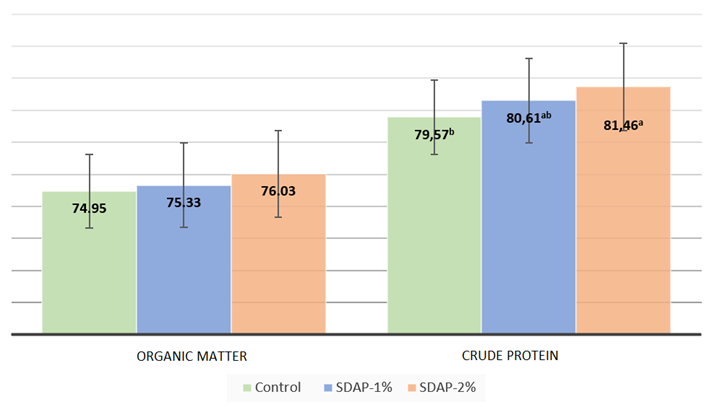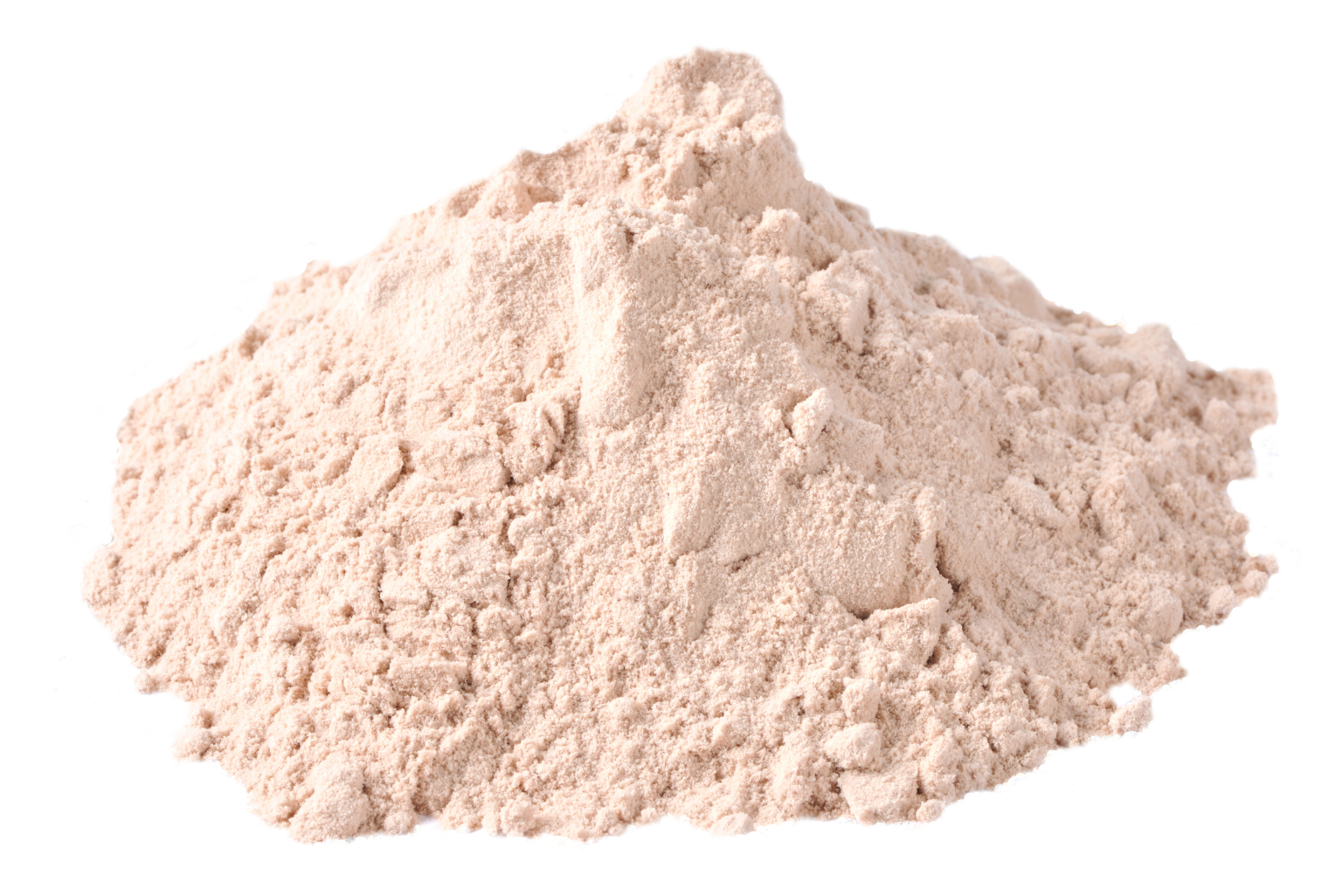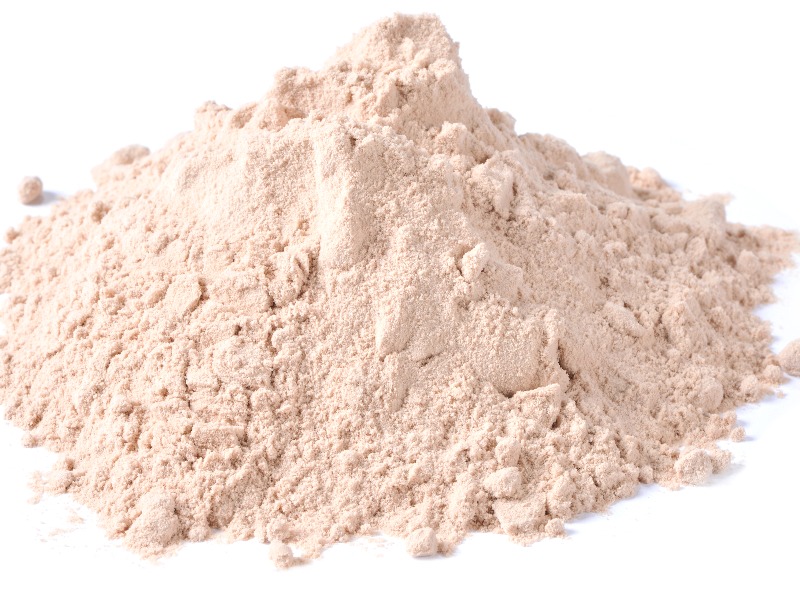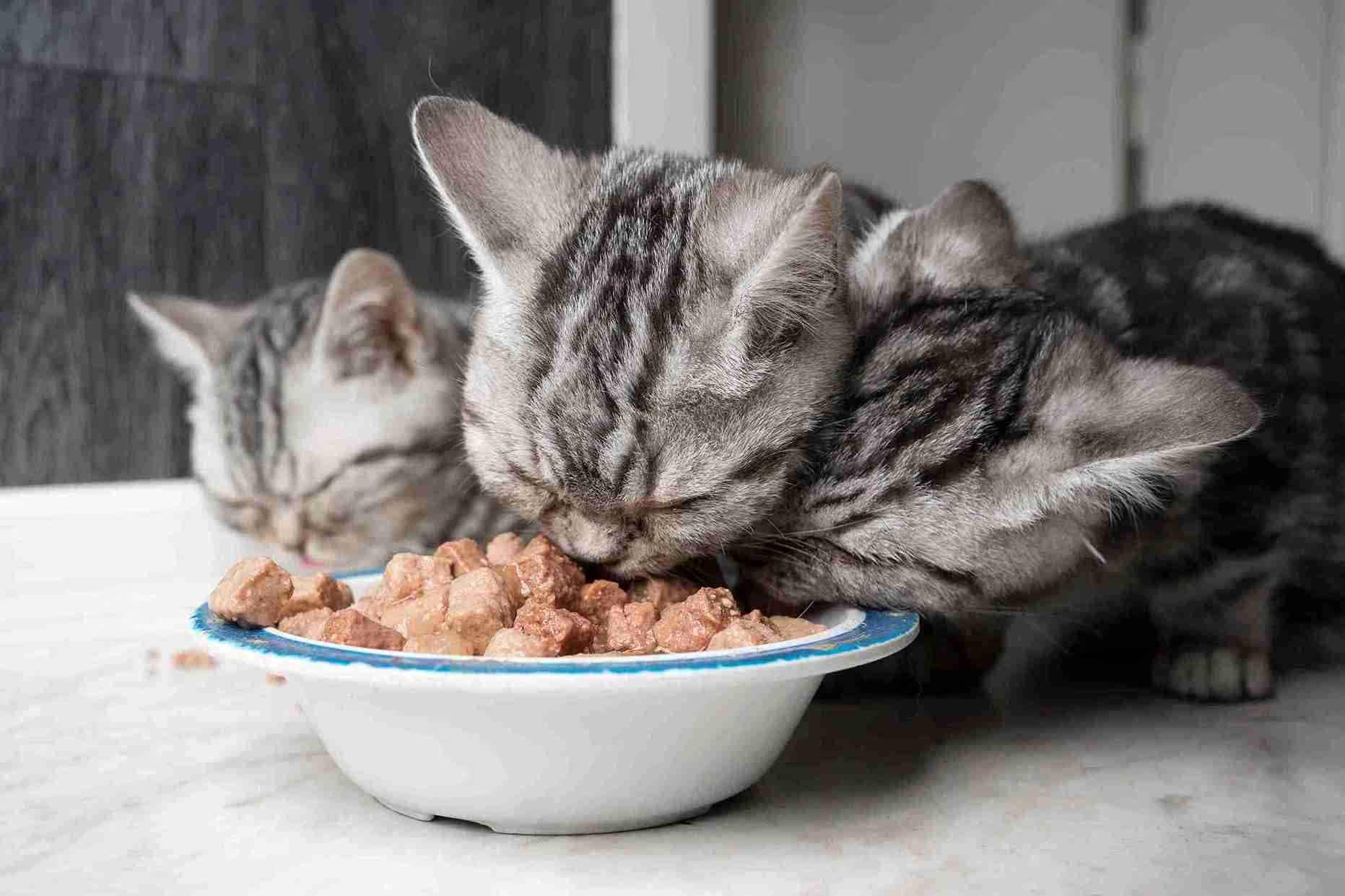The high protein content of SDAP is also accompanied by an adequate composition of essential amino acids. For dogs, the most limiting amino acid in SDAP is methionine, like other animal ingredients. As the graphic in Table 1 shows, SDAP is high in protein and has an adequate amino acid score (EAA). The EAA is calculated by the concentration of a particular essential amino acid within the protein of the ingredient and divided by the concentration of the same amino acid relative to the protein recommendation for the species. This is a measure to identify the relative concentration of each amino acid in the protein source to classify it as limiting or not in the ingredient or diet. Values above 1.0 for the amino acid score indicate that the amino acid is in adequate concentration in the protein source. Table 1 shows the amino acid composition of some commonly used dry feed ingredients, with the EAAs of the main limiting amino acids in each.
Table 1: Amino acid composition of protein sources used in dog and cat foods.
FEDIAF - Table of nutritional recommendations for adult dogs and cats in maintenance; SDAP – spray dried plasma; PM – Poultry Meal; MBM – Meat and Bone Meal; EP – Egg Powder; SB – Soy Bean; SPC – Soy Protein Concentrate; CG – Corn Gluten; WG – Wheat Gluten.
Due to the spray-dry processing, plasma maintains its high solubility, which positively affects its digestibility characteristics and processing effects. The digestibility coefficients of this ingredient for dogs and cats have not yet been determined, but its effects when included in pet food on dietary digestibility have been demonstrated.
Quigley et al. (2004) conducted 3 experiments in dogs, with the inclusion of up to 3% of SDAP in the animals' diets, and compared with a negative control treatment. These authors found consistent results in increased apparent dry matter (DM) digestibility in all trials and increased crude protein digestibility in two studies. Similar results were found by Rodriguéz et al. (2016) using wet cat diets containing 3% SDAP or 3% wheat gluten (WG) as binders. These authors found increased digestibility of DM in animals that consumed the diet with SDAP.
Recently, we also included 1% or 2% SDAP in dog diets, and its effects on digestibility coefficients were determined. As shown in Figure 1, there was a gradual increase in the digestibility of organic matter and crude protein as the inclusion of SDAP increased.

Marketplace
Figure 1: Digestibility coefficients of organic matter and Crude Protein in dogs fed diets containing 1% or 2% Spray-dried Animal Plasma (SDAP).
The protein portion of plasma, which corresponds to 80% of the ingredient is mainly composed of albumin, immunoglobulin G (IgG), and coagulation proteins (Aldrich, 2012), which are preserved by the spray-drying process while maintaining their solubility (Patel et al., 2009). Due to this, SDAP has important functional properties in wet food processing in the form of pâté or chunks in sauces as an emulsifying and binding agent (Aldrich, 2012), playing a similar role to hydrocolloids.
Hydrocolloids represent a diverse group of long-chain polymers that form gels by thickening, emulsifying, coating, and stabilizing food components (Li and Nie, 2016). Although SDAP is not classified as a hydrocolloid, it has very similar properties and is widely used in wet food for this purpose. In Brazil, many wet food products contain SDAP in the composition, associated or not with other agents such as xanthan gum, guar gum, carrageenan gum, modified starch, wheat gluten, soy protein, and whey protein, which have similar functionalities in the process.
Wet food is mainly formulated with by-products from the meat industry, with high protein and lipid content and high moisture content (70-85%). To avoid phase separation and promote better texturization and homogenization, gelling and emulsifying agents are used (Dainton et al., 2021). In a study comparing the technological properties of binders commonly used in wet food in the form of chunks in sauce or loaf, Polo et al. (2006) found that the inclusion of SDAP at concentrations of 1.5% and 2.5%, respectively, increased the breaking strength and reduced water loss relative to wheat gluten. In another study by these same authors (Polo et al., 2013), the inclusion of 2.0% SDAP was compared with 2%, 4%, or 6% of wheat gluten, and similar results were verified, with 2.5 times increase in the food's breaking strength and an improvement in juiciness due to an increase in the absorption of water from the sauce in contact with the food, of approximately 20%.
Due to its high-water retention capacity, when included in high concentration in the diet, the SDAP gives hardness to the pâté, as can be seen in the Figure below, when compared to WG at the same concentration.

Figure 2: Photo of pâté produced with SDAP (left) or Wheat Gluten (right), at the same inclusion (Polo et al., 2013).
These properties, such as increased digestibility, especially of DM and CP, contribute to the reduction of excreted fecal volume and, when added to its emulsifying properties and as a binder, make SDAP a potential replacement ingredient for hydrocolloids, which have been associated with negative effects on fecal digestibility and quality (Craig, 21; Harper and Siever-Kelly, 1997; Karr-Lilienthal et. al, 2002) as well as inducing intestinal inflammation and gastric ulcerations, which have been described in rats, mice, rabbits, and guinea pigs ingesting hydrocolloids such as carrageenan gum or carboxymethyl cellulose (Martino et al., 2017; Wu et al., 2017).
Conclusion
Nowadays, the SDAP has been widely used in wet food due to its emulsifying, binding, and texturizing properties, with the objective of improving the presentation of food and adding to the nutritional composition, different from the additives commonly used for this purpose. Additionally, in dry food, this ingredient has demonstrated that, even at low inclusions in the formulations, it promotes significant increases in diet digestibility.
In addition to the properties mentioned above, SDAP has some functional properties, especially prebiotic and immunomodulatory effects, which will be discussed in the next edition.
By: Ricardo Souza Vasconcellos, Lucas Bem Fiuza Henriquéz, Patrick Lourenço dos Santos.
Source: All Pet Food Magazine.
References
- Aldrich, G. Plasma thermoplastic gel with pet health benefits. Accessado em: https://www.petfoodindustry.com/articles/4545-plasma-thermoplastic-gel-with-pet-health-benefits. (December-21-2012)
- Craig, J.M. Additives in pet food: are they safe? J Small Animal Practice 2021, 62, 8, 624–635.
- Dainton, A.N., Dogan, H., Aldrich, C.G. The effects of select hydrocolloids on the processing of pâté‐style canned pet food. Foods 2021, 10, 10.
- FEDIAF – The European Pet food Industry Federation. Nutritional Guidelines for complete and complementary foods for dogs and cats. FEDIAF press, Bruxeles, Belgium, 2017, p.49.
- Harper, E. J.; Siever-Kelly, C. The effect of fibre on nutrient availability in cats of different ages. In: Recent Advances in Animal Nutrition in Australia. Eds J. L. Corbett, M. Choct, J. V. Nolan and J. B. Rowe. University of New England, Armidale. 1997, p.110-116.
- Karr-Lilienthal, L.K.; Merchen, N.R.; Grieshop, C.M.; Smeets-Peeters, M.J.; Fahey, G.C. Selected gelling agents in canned dog food affect nutrient digestibilities and fecal characteristics of ileal cannulated dogs. Arch. Tierernahr. 2002, 56, 141–153.
- Li, J.M., Nie, S.P. The functional and nutritional aspects of hydrocolloids in foods. Food Hydrocolloids 2016, 53, 46–61.
- Martino, J. V., Van Limbergen, J. & Cahill, L. E. The role of carrageenan and carboxymethylcellulose in the development of intestinal inflammation. Frontiers in Pediatrics. 2017, 5, 96.
- Patel, R.P., Patel, M.P., Suthar, A.M. Spray drying technology: an overview. Indian J Sci Technol 2009, 2, 10.
- Polo, J., Rodríguez, C. Improving the juiciness of pet food chunks and pouches with plasma. Petfood Industry. 2013. October, 36-40.
- Polo, J., Rodríguez, C., Saborido, N., Ródenas, J. Functional properties of spray-dried animal plasma in canned pet food. Anim Feed Sci Tech 2005, 122 ,3–4, 331–343.
- Quigley, J.D., Campbell, J.M., Polo, J., Russell, L.E. Effects of spray-dried animal plasma on intake and apparent digestibility in dogs. J Anim Sci 2004, 82,1685-1692.
- Rodríguez, C., Saborido, N., Ródenas, J., Polo, J. Effects of spray-dried animal plasma on food intake and apparent nutrient digestibility by cats when added to a wet pet food recipe. Anim Feed Sci Tech 2016, 216, 243–250.
- Wu, Y., Pan, L., Tian, Q., Piao, X. Comparative digestibility of energy and ileal amino acids in yeast extract and spray-dried porcine plasma fed to pigs. Archives of Anim Nutr 2018, 72, 1, 76–84.
You could be interested: Manufacturers need partners who support them in understanding the Pet Food ecosystem
About company

About company
Our history dates back more than 35 years, when our scientists discovered the powerful role that functional plasma-derived proteins play in maintaining the immune function of animals.
Since then, we have obtained extraordinary, consistent and effective results.
Spray-dried plasma (SDP) and red blood cell products are used in animal feed and other industries to add value through their unique properties that positively impact billions of animals each year.
Noticias de la empresa
11/04/2025
Driving Innovation in Pet Nutrition: APCs Webinar Highlights the Role of Plasma Proteins
03/12/2024





































